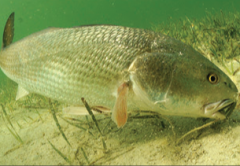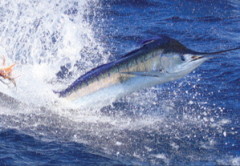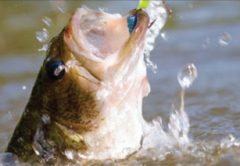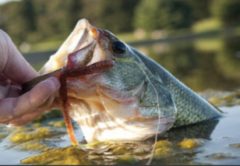Hot weather behavior transition for largemouth bass in freshwater fishing means planning your trips early and late for successful trips. Afternoon rains will make your outing more comfortable, but also will lower the water temperature a couple degrees triggering bass to feed. Match the hatch – top water, stick baits, lipless crank baits, suspended slash baits, flukes, trick worms, swim baits, Carolina rigged worms, creature baits and Texas rigged worms are all baits to have tied on. You’ve got to throw one of them in the water to get a bite.
Bass: Cooler water temps in the morning entice bass to shallow ambush feeding areas; hydrilla edges and lily pads are their hiding places. Points along the river with running water cause bait to be flushed bringing in the schoolies for an evening feed. The springtime panfish and shad hatchlings are now 2-3 inches. Try lures of same size: Rattle Traps (chrome), Rapala Countdown, small plastics etc. 4-inch soft plastics rigged on an eighth ounce weighted hook should produce quality fish along hydrilla edges. Flukes worked as finesse baits cast into the shallows are sure to get strikes.
Panfish: Artificial fun with a Johnson Beetle Spin or ZMan Chatterbait – slowly troll your boat 20-30 feet out from the shoreline or seawall along your favorite stretch of the St. Johns with ultralight spinning tackle. Cast to the bank and retrieve slowly to catch bluegill, shellcraker, and stumpnockers. Bonus fish are largemouth bass, many will be keepers.
Catfish: Cooler temps at night make the cats hungry, especially following the afternoon rains. Circle hooks are great for catfish – the fish hooks themselves and most times the hook ends up in the corner of the mouth making hook removal easier when handling these spiny fish. Tip: use just enough weight to hold the bottom and tie the weight 10 inches from the hook.













